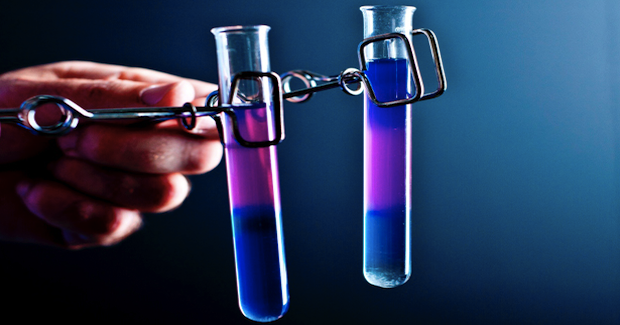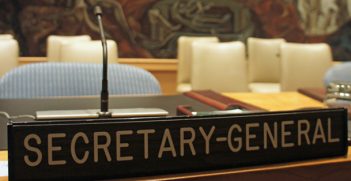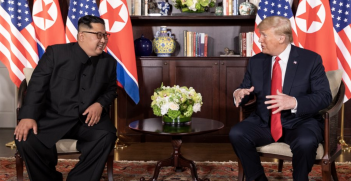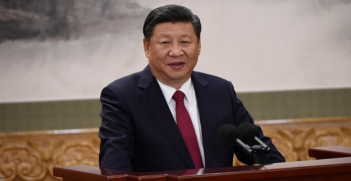Science Diplomacy with Indonesia

Global investment in research and development has almost doubled since 2000. This doubling of investment has been mirrored by growth in the importance of international engagement. International collaborations are now more important than ever for finding solutions to major global problems and enhancing economic productivity and competitiveness through innovation.
Australia produces 3 per cent of the world’s research and development (R&D) but needs to access the other 97 per cent. The country gains this access in a variety of ways including substantial international collaboration by the Australian scientific community at a number of levels and scales. These collaborations are supported by the Australian Research Council and the National Health and Medical Research Council. They are also facilitated through bilateral Australian government research programs with China and India, by other bodies such as the CSIRO and the Australian Centre for International Agricultural Research, and through approximately 30 Commonwealth international science and technology treaties, agreements or memoranda of understanding.
The Australian Academy of Science also engages actively in promoting international collaborations, and in August 2016 the Academy participated in the 3rd Indonesia-Australia Dialogue held in Yogyakarta. The session explored the potential for cooperation in areas such as food and agriculture, energy and information technology.
Agriculture, food and energy security are priority areas for both Indonesia and Australia. Information communication sciences and technology (ICT) can provide benefits to both countries, for example in improving health services and also through precision farming—harnessing ICT to enable farmers to do their work more smartly and efficiently.
In the area of emerging technologies related to energy, Australia is doing important work in solar photovoltaics, wind, ocean and bioenergy. CSIRO has an interest in renewable energy sources to assist people in Indonesia’s rural areas that may not have access to the grid. Small solar-powered generators, enough to power small villages, might be something that both countries could explore.
The Australia-Indonesia Centre is building strong bilateral links in the areas of energy, food and agriculture, health and infrastructure. In the field of medical research there has been strong collaborations between the Melbourne-based Walter and Eliza Hall Institute of Medical Research and the Eijkman Institute in Jakarta related to malaria and molecular biology programs targeting drug resistance and cerebral pathogenesis.
Australian research institutions, such as the Australian Centre for International Agricultural Research, and a number of universities, have a presence in Indonesia and have long-standing research collaborations with their Indonesian colleagues.
These examples illustrate a level of effective research cooperation between our two countries, but Australia needs to identify new opportunities to strengthen our international linkages with Indonesia. In this way we increase our level of global engagement in science and technology, and this is in the national interest. For example, we need to have strong scientific collaboration with Indonesia in the area of biotechnology for the detection, diagnosis and surveillance of animal and human emerging diseases. Partnerships with Indonesia and others in the region will minimise the health and economic risks for Australia.
Australia and Indonesia signed an agreement on science and technology in 2005, and the Australian government has recently launched a National Innovation Science Agenda which includes a Global Innovation Strategy to improve Australia’s science, research and innovation collaboration. However, at this time Indonesia is not one of the 17 priority economies identified in this strategy.
Indonesia is predicted to be the 5th largest economy in the world by 2030 and this means a potential, and indeed an imperative, for Australian industry and businesses to continue engaging with and investing in Indonesian companies.
The Australian Council of Learned Academies 2015 report, Smart Engagement with Asia: leveraging language, research and culture, made several significant evidenced-based findings to guide and strengthen international engagement. These included the finding that deepening cultural relations between Australia and Asia requires patient relationship building to foster sustained and long-term interconnections and networks. Moreover, the report found that both science diplomacy and cultural diplomacy are an increasingly important dimension of public diplomacy, but that there is a lack of clarity and consensus about policy making in these areas.
In 2010, Dr Bruce Alberts, a renowned biochemist and former president of the US National Academy of Sciences, was appointed as one of President Barack Obama’s first science envoys to engage Indonesia and other countries through science and technology partnerships. Dr Alberts has continually encouraged the Australian Academy of Science to engage with Indonesia in the area of science and technology, particularly in the area of science education.
Over the years we have done so in partnership with the Indonesian Academy of Sciences. The Australian and Indonesian academies, with support from the Knowledge Sector Initiative, are now organising a series of science events in Canberra over the course of four days in late November. This will include workshops in agriculture, health, marine sciences and big data. Early and mid-career researchers from both countries will be taking the lead in many of these events.
In the area of science diplomacy, Australia should place a high priority on working with Indonesia to develop and strengthen research collaborations to solve common problems. Science will provide a common language to build bridges between our two cultures in times of serious diplomatic issues.
Professor Cheryl Praeger is the foreign secretary of the Australian Academy of Science. Cheryl is a professor of mathematics. She is a former Australian Research Council Federation Fellow.
This article is published under a Creative Commons Licence and may be republished with attribution.





